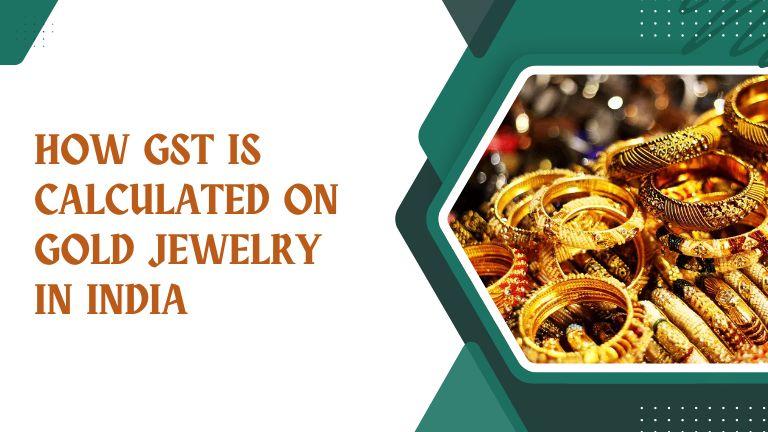How GST is Calculated on Gold Jewelry in India

Gold has always been a popular investment and an essential part of Indian culture, particularly in weddings and festivals. However, purchasing gold jewelry involves not only the cost of gold but also additional charges like making charges and taxes, including the Goods and Services Tax (GST). Understanding how GST is calculated on gold jewelry is crucial for both buyers and sellers to ensure transparency and compliance.
Understanding GST on Gold Jewelry
GST on gold jewelry is applied separately on the gold value and the making charges. The government has structured the taxation to ensure that the end consumer bears a fair tax burden while keeping the gold market stable.
Applicable GST Rates on Gold Jewelry
As per the current taxation framework in India:
Gold Value: A GST of 3% is levied on the value of gold in the jewelry.
Making Charges: A GST of 5% is levied on the making charges associated with crafting the jewelry.
This dual taxation structure means that the final price of gold jewelry includes both these GST components.
Breakdown of GST Calculation on Gold Jewelry
To understand how GST is calculated, let’s consider an example:
Example Calculation
Assume you are purchasing gold jewelry with the following details:
Gold weight: 20 grams
Gold rate per gram: ₹6,000
Total gold value: 20 grams × ₹6,000 = ₹1,20,000
Making charges: 10% of the gold value = 10% × ₹1,20,000 = ₹12,000
Now, let’s apply GST:
GST on Gold Value: 3% of ₹1,20,000 = ₹3,600
GST on Making Charges: 5% of ₹12,000 = ₹600
Final Price Calculation
Gold value: ₹1,20,000
Making charges: ₹12,000
GST on gold: ₹3,600
GST on making charges: ₹600
Total price payable: ₹1,20,000 + ₹12,000 + ₹3,600 + ₹600 = ₹1,36,200
Impact of GST on Gold Buyers
Increased Cost: Before GST, gold jewelry was subject to VAT and excise duty, but now the total tax burden is slightly higher due to GST.
Transparency: GST ensures better transparency in gold transactions as taxes are clearly mentioned in invoices.
Better Compliance: Since GST is an indirect tax, jewelers must comply with taxation rules, reducing the risk of tax evasion.
Input Tax Credit (ITC): Registered businesses can claim ITC on GST paid on making charges, which helps them in reducing their overall tax liability.
GST Calculation for Different Types of Gold Jewelry
Gold Coins & Bars: A flat GST of 3% is applicable without any additional making charges.
Custom-Made Jewelry: Since making charges vary depending on customization, the GST on making charges can be higher for intricately designed pieces.
Antique Jewelry: For old gold jewelry sold as an investment, GST registration online is applicable only if the seller is a registered business.
GST Exemptions and Considerations
Second-Hand Gold Jewelry: If an individual sells old gold jewelry to a jeweler, no GST is applicable. However, if the jeweler resells the refurbished jewelry, GST will be charged to the buyer.
Gold Exchange: If you exchange old gold for new jewelry, GST is applicable only on the making charges of the new piece.
Imports: Imported gold attracts customs duty and IGST, which adds to the overall price.
Conclusion
Understanding how GST is calculated on gold jewelry helps buyers make informed decisions. While GST increases the overall cost, it also ensures transparency and accountability in the gold market. Buyers should always check invoices carefully to confirm the correct application of GST. With clear knowledge of how taxation works, purchasing gold jewelry becomes a more transparent and hassle-free process.
Post Your Ad Here
Comments